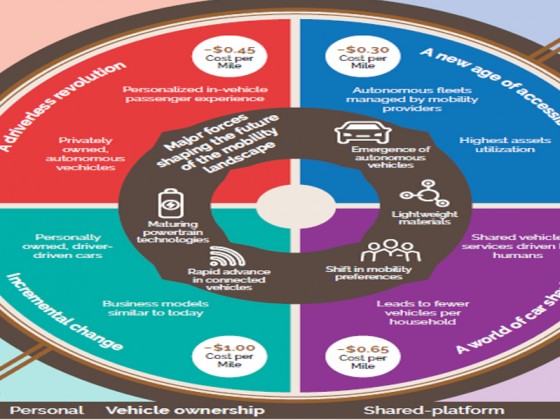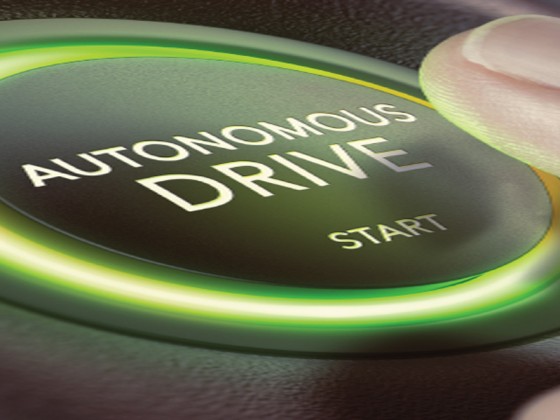by | Dr Raslan Ahmad, raslan@might.org.my | Tengku Saifullizan Rahim, tengkusaiful@might.org.my | Anusha Magendram, anusha@might.org.my
The wave of change that will be led by the Fourth Industrial Revolution (4IR) is now firmly in sight. As such, we need to be prepared in order to stay relevant. In its entirety, 4IR brings together the rise of digital platforms and automation that will turn around business landscapes, industrial development and governance. To bring the nation up to speed with the latest technological changes breaking ground, myForesight® recently highlighted four critical future trends related to the development of sustainable cities. Balancing a vast array of interests, these four trends are evolving at breakneck speed and soon, these forces will exert a significant impact to current developments led by emerging trends namely urbanisation, smart cities, digital society, Internet of Things (IoT), new business models and innovation in transport and climate change.
Trend #1 : Urbanisation & smart cities
IoT, Artificial Intelligence (AI), robotics and process automation are transforming everything from the career path the next generation will opt for to where a large section of the world’s demographics chooses to live. The global population will increase to 9.6 billion by 2050 and the majority of the population will grow in cities, with an estimated 66% of the global population living in urban areas by 2050. The implementation of smart cities will further advance digitisation and the deployment of new technologies in transportation. Based on a recent study by myForesight®, 75% of Malaysians are currently living in urban areas. At present, Malaysia’s urbanisation rate comes in at about 4%, and is among the fastest growing in East Asia.
Trend #2 : Digital society & Internet of Things (IoT)
In today’s digital society, IoT is inextricably linked to other technology domains such as big data, smart cities and mobile apps. Based on Business Insider’s recent Intelligence IoT report, it was projected that there would be 34billion devices connected to the internet by 2020, up from 10 billion in 2015, representing a 28% five-year compound annual growth rate (CAGR). Malaysia was then ranked 31st as the most tech ready country with approximately 150% mobile phone penetration.
Trend #3 : New business models & innovation in transportation
Innovative new business models are offering various means to bridge current gaps in infrastructure and urbanisation issues. New ideas are pushing the envelope—integrating innovative practices to improvise the transportation system. Seamless multimodal transportation technologies enable consumers to get from one location to another via multiple, connected modes of transportation on a single fixed price charged on a single payment system. Based on the United Nations’ World Urbanization Prospects, World Business Council for Sustainable Development, passengers travel distance is expected to double by 2050—over 70 trillion kilometres per year. An estimated 1.1 million people travel by train and buses in Kuala Lumpur every day, according to the Land Public Transport Commission (SPAD). In another development, it was estimated that around 60,000 Malaysian citizens have registered as ride-hailing services’ drivers, with dense concentration in Klang Valley & Penang. Approximately 78% of commuters use smartphones while using public transport. Transportation and land use patterns are inevitably linked, especially in urban areas. Transit-oriented development (TOD) is a “3C” model for development—compact, connected, and coordinated; and this has a direct impact on urban mobility and the economy. TOD reduces travel time, congestion and emissions, while directly expanding access to different areas of the city and thus stimulating a host of economic activities.
Trend #4 : Climate change
Climate change poses a threat to the environment and mankind in general. The issue is a compelling factor pressing for urgent reduction in carbon emission and pollution—yet these are the consequences of global warming that we are currently experiencing. Cities are responsible for 75% of the world’s carbon emissions. Changes in temperature, intense storms and sea-level rises may transform infrastructural design, operations and maintenance in the near future. To cope, emissions of greenhouse gases worldwide will have to be cut by 50% by 2050. This is in line with the rise of automation and mechanisation being ushered by 4IR. Emerging digital technologies and services will influence future transportation in cities such as big data, electronic payment, Artificial Intelligence (AI), shared mobility, position-based information, intelligent transportation system, embedded technologies, cloud computing and multimodal transportation solutions. For instance, AI is defined as the ability of a computer program or machine to think, learn and make decisions. Deep learning technology—a technique for implementing machine learning, is expected to be the largest and the fastest-growing technology in the automotive AI market. It is currently being used in voice recognition, voice search, recommendation engines, sentiment analysis, image recognition and motion detection in autonomous vehicles.
The progression in automotive
We need to take strides to keep our awareness up to date with current technological advancements in the automotive sector. Hence, we cannot deny the sustainability of efficient energy sources to power up our vehicles. And that’s exactly what electrification brings to the mobility industry. As viable alternatives, hybrid and Battery Electric Vehicles (BEV) are seemingly competent modes of future smart mobility. Apart from that, the efficiency of the transportation means of the future will be aided by digitally-enabled platforms via information sharing models between Vehicle-to-Vehicle (V2V) and Vehicle-to-Grid (V2G). Another good model is the sharing model where car sharing, ride sharing and car-pooling will be a viable business opportunity that fits consumers’ future requirements. A new broad spectrum of autonomous vehicles presents the next level of mobility solutions by incorporating efficiency and convenience. Significantly, light weight design will play a crucial role too in terms of energy and cost efficiency.
The progression of smart mobility
Much has been said about smart mobility. Smart mobility in cities is expected to be intelligent transportation. Based on Intelligent Transport finding, at present, the top five smart mobility cities are Singapore, Barcelona, London, San Francisco and Oslo. In Singapore, sensors were installed throughout the city to accumulate large amounts of data to monitor mobility related activities such as parking, traffic and cleanliness. Barcelona for one has many smart solutions to keep its population moving freely, including smart parking and traffic systems to monitor congestion. The city has also invested in clean transportation with its growing fleet of hybrid buses and bikes.
Meanwhile, London is using smart technologies to help tackle congestion and make parking simpler. It has also invested heavily in other transportation technologies, renewing its buses and metro fleets with new, cleaner and more efficient technologies. Similarly, San Francisco has embarked on smart ticketing to streamline public transport processes and smart parking. Oslo recently introduced smart traffic measures by implementing license plate detectors to calculate accurate congestion in the city and it is also currently building 37 miles of bike lanes. The city has a pipeline of smart mobility implementation actions to improve carbon emissions. This includes a sweeping ban of cars in the city centre by 2019. To manage the transition, Oslo aims to redraw its entire transportation network by 2020 and cut fuel emissions by 50% and be 95% climate neutral by 2030. Nevertheless, the global interests of the four trends highlighted above clearly demonstrate that the development of smart mobility is gaining a fresh life. This will lead to the increasing awareness on the importance of smart mobility—a prerequisite for smart city applications, i.e. seamless transportation. While it is clear there are a lot of opportunities and advantages in pursuing smart mobility agendas, some issues and challenges still linger and need to be carefully addressed as described in the diagram.

Ultimately, the future of smart mobility lies in connecting the dots between autonomous driving, connectivity,
e-mobility and shared services. In response to growing trends and indicators, MIGHT has established the National Mobility Initiative to focus on smart mobility efforts which give emphasis on key automotive (the new national car project), rail and shipping development areas. Collaborations with various hightech industries and relevant experts are made possible through MIGHT Interest Groups (MIGs) which serves as a platform to provide an opportunity to work closely with the key stakeholder groups earlier strategic stage of the industry’s planning and development process. Being explicit about investment objectives and criteria; The MIGs provide members the opportunity to voice out their input and suggest potential solutions to cultivate stimulating dialogue between key decision makers.
In addition, MIGHT will also co-develop new technology solutions through a range of pitching, incubation and development avenues to create a flexible, responsive and agile regulatory framework. This will be carried out proactively to minimize unnecessary obstacles that may impede the uptake of new technologies. Further, to help Malaysia’s private sector outperform the competition, the government needs to be effective in playing multiple roles. These roles constitute timely implementation as an enabler, incubator and collaborator to bring about new technologies that can benefit both Malaysian businesses and their target markets. Finally, a Special Purpose Vehicle (SPV) will be designed to enable incubation and accelerate the delivery of initiatives to capture objectives that the National Mobility Initiative outlines.










